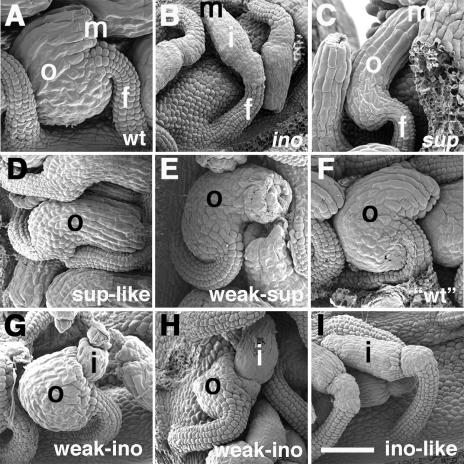Figure 1.
Scanning electron micrographs of mature ovules from wild-type, mutant, and transgenic plants. In wild-type ovules (A), the outer integument initiates and grows from only the gynobasal side of the ovule primordium. In ino-1 ovules (B), the outer integument fails to initiate growth, whereas in sup-5 ovules (C), the outer integument grows from both the gynobasal and gynoapical sides of the ovule primordium. Outer integument growth in two phenotypic classes, sup-like (D) and weak-sup (E), resembled that of sup-5 ovules, but growth from the gynoapical side of the ovule primordium was reduced in the weak-sup class. Ovules that resembled wild type (F), exhibiting typical asymmetrical outer integument growth, were identified. Outer integument growth in the weak-ino class could vary from almost complete (G) to relatively rudimentary (H). In the ino-like class (I), outer integument growth did not occur. Representative ovule phenotypes were from plants containing the PROINO:YAB3 (D), PROINO:CRC (E), PROINO:INO (F and G), PROINO:FIL (H), and PROINO:YAB5 (I) transgenes. f, Funiculus; m, micropyle; i, inner integument; o, outer integument. Scale bar = 50 μm.

